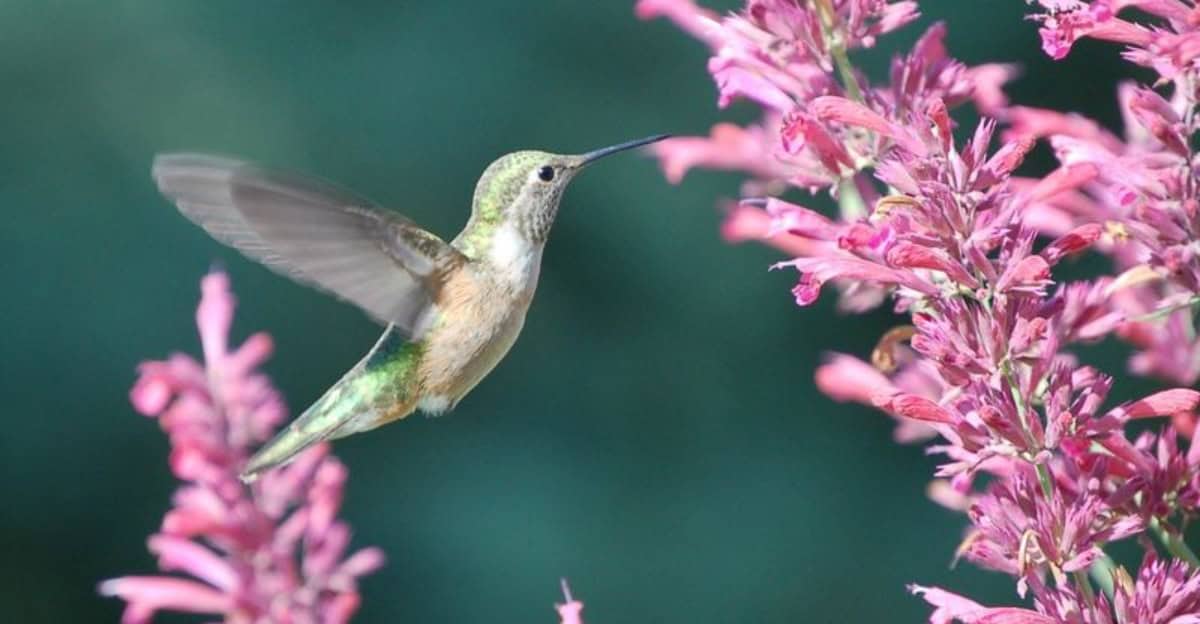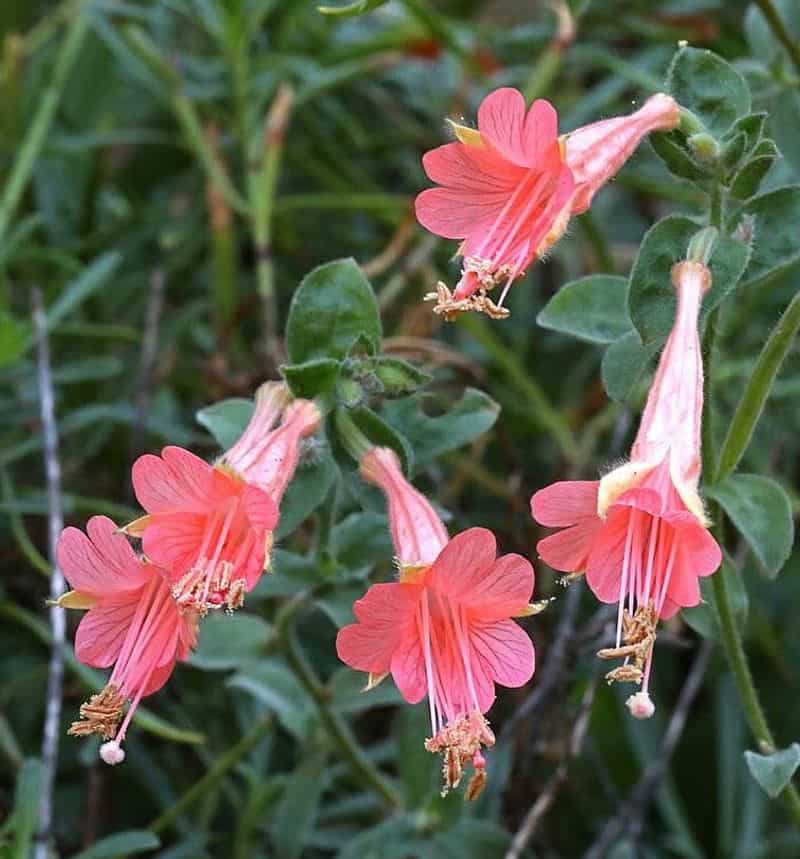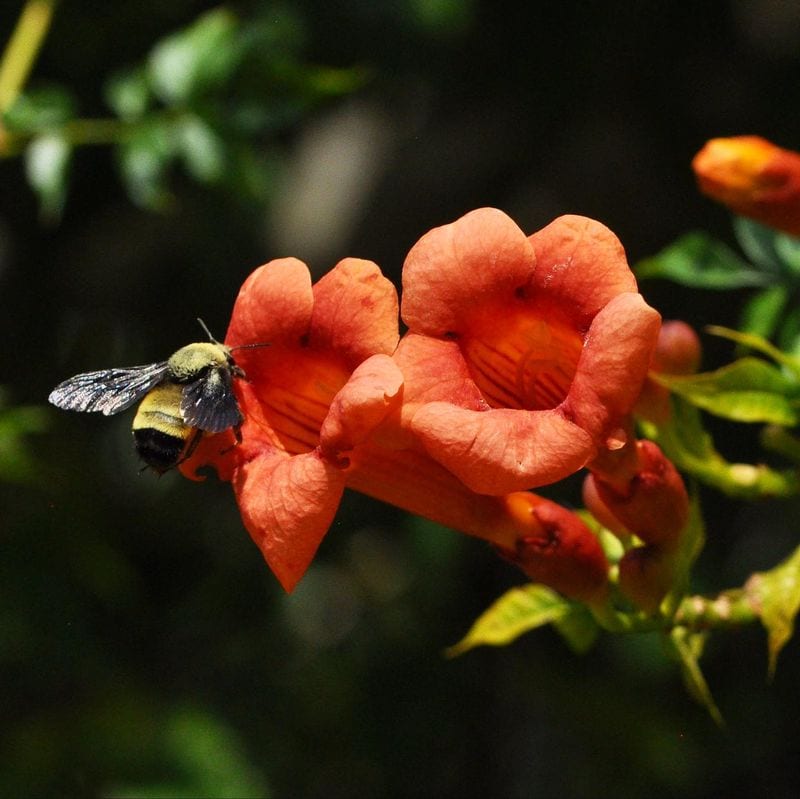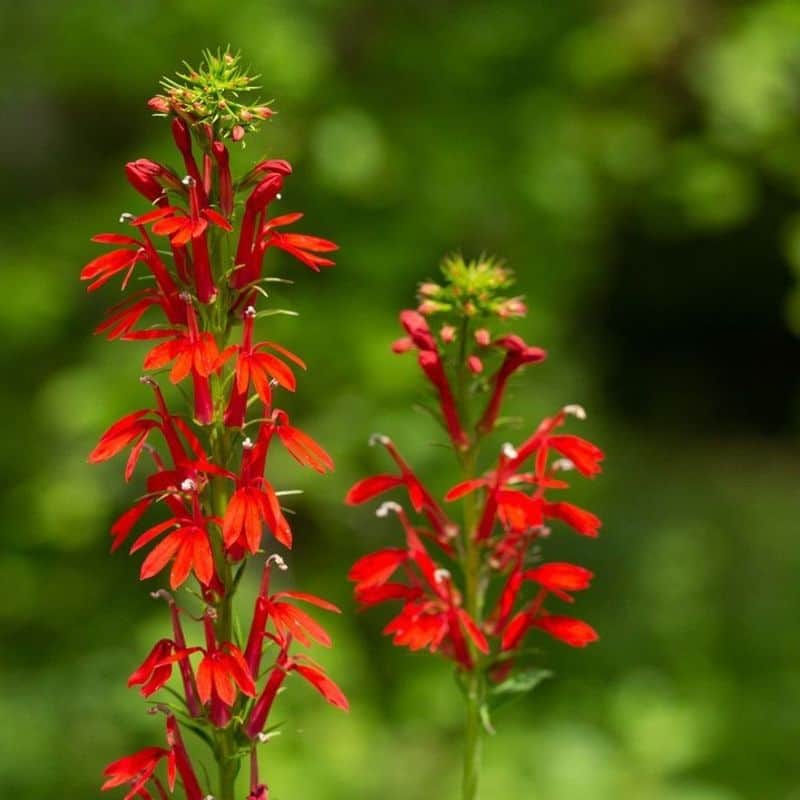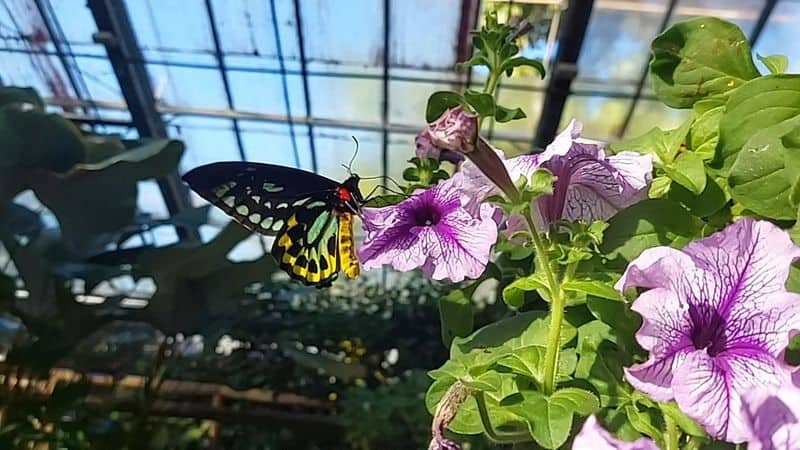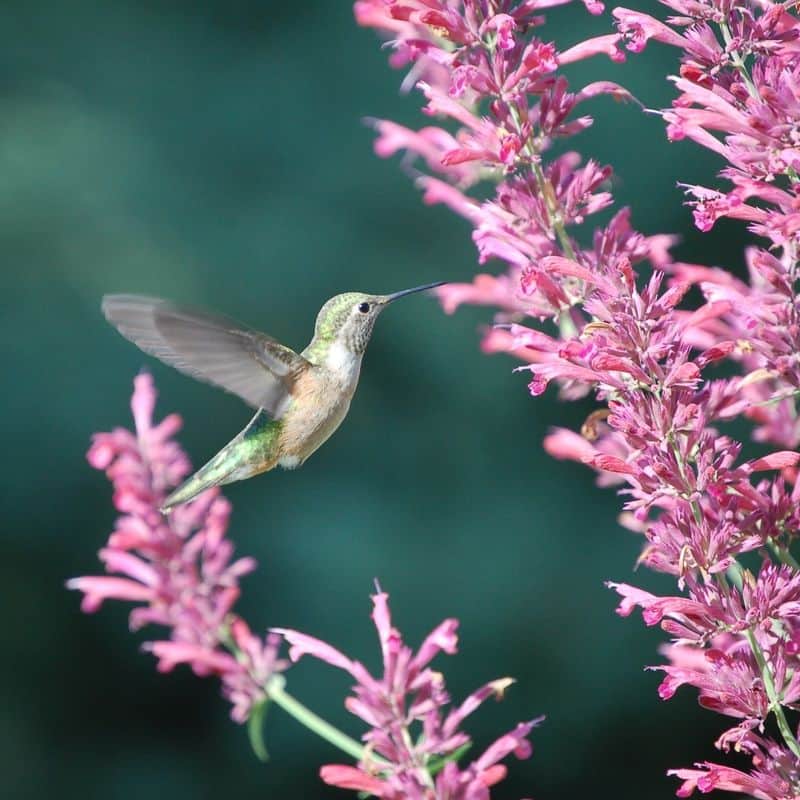Welcome to a whimsical world where nature’s aerial acrobats, hummingbirds, find their garden paradise. These tiny, energetic creatures are not only a joy to watch, but they also play a vital role in pollination.
If you’re looking to transform your backyard into a vibrant hummingbird haven, these ten gorgeous plants will do the trick.
Each has its own unique charm and offers the nectar-rich blossoms hummingbirds crave. Let’s explore these captivating plants that promise to bring fluttering beauty right to your doorstep.
1. Bee Balm (Monarda didyma)
Bee Balm is the flamboyant showstopper of any garden, attracting hummingbirds with its fiery red blooms.
Its aroma is as captivating as its color, making it a favorite not just for birds but for garden lovers too. Plant Bee Balm in a sunny spot and watch as it becomes the stage for nature’s most dazzling aerial displays.
Fun fact: Bee Balm, also known as Monarda, was used by Native Americans for its medicinal properties. This plant’s charm lies not only in its beauty but in its rich history and ecological importance.
2. Salvia (Salvia spp.)
Salvia offers a mesmerizing dance of color and scent, luring hummingbirds like a siren’s call. Known for its resilience and striking spires, this plant is easy to grow and maintain.
The tubular flowers are perfectly shaped for a hummingbird’s beak, making it a preferred choice. Salvia’s origins trace back to the Mediterranean, where it’s loved for both ornamental and culinary uses.
This plant not only adds beauty but also a touch of culinary delight, as its leaves are sometimes used in cooking.
3. Lantana (Lantana camara)
Lantana is the garden’s vibrant chatterbox, known for its cheerful blooms that change colors as they age. These multicolored clusters are a feast for the eyes and a beacon for hummingbirds.
Resilient and sun-loving, Lantana thrives in warm climates, bringing a tropical feel to your garden. Despite its beauty, be cautious: Lantana can be invasive in some regions.
Its lively presence and nectar-rich flowers ensure it’s always the center of attention, drawing in not just birds but happy garden visitors.
4. Fuchsia (Fuchsia spp.)
Fuchsia is the garden’s delicate ballerina, with pendulous blooms that seem to dance in the breeze.
Known for their striking two-tone colors, Fuchsias provide a dazzling display of pinks and purples that hummingbirds find irresistible.
These shade-loving plants are perfect for hanging baskets or sheltered garden spots.
Their elegant form and vibrant colors add a touch of grace, making them a perfect addition for those seeking a sophisticated garden look.
5. Trumpet Vine (Campsis radicans)
Trumpet Vine is the garden’s bold climber, reaching for the sky with its vivid orange blooms.
These trumpet-shaped flowers are not just eye-catching; they’re also designed for hummingbird beaks, providing an endless supply of nectar.
This vigorous plant can cover trellises or walls, transforming spaces with its vibrant presence. However, its enthusiasm for growth means it needs regular pruning to keep it in check.
With a bit of care, Trumpet Vine will reward you with a spectacular floral display and a flurry of hummingbird activity.
6. Cardinal Flower (Lobelia cardinalis)
Cardinal Flower is the garden’s passionate artist, painting landscapes with bold strokes of red. Its tall, elegant spikes create a striking focal point, especially in wet or marshy areas.
This native North American plant is a hummingbird’s dream come true, offering a rich supply of nectar throughout the blooming season.
Despite its beauty, Cardinal Flower has a fleeting life span, requiring replanting every few years. Its fiery blooms and vital role in supporting wildlife make it a garden favorite.
7. Columbine (Aquilegia spp.)
Columbine is the garden’s whimsical fairy, enchanting with its intricate, spurred flowers that look like something out of a storybook.
These charming blooms come in a variety of colors, each as magical as the last. Columbine thrives in partially shaded areas, making it a versatile choice for woodland gardens.
Its unique shape and nectar-rich flowers are perfect for hummingbirds, who find its hidden treasures irresistible.
This plant’s delicate beauty and adaptability make it a must-have for any garden seeking a touch of enchantment.
8. Petunia (Petunia spp.)
Petunia is the garden’s cheerful companion, brightening spaces with a kaleidoscope of colors. Known for their wide range of hues and patterns, Petunias are versatile and easy to care for.
These sun-loving flowers release a sweet scent that attracts hummingbirds and gardeners alike. Plant them in beds, borders, or containers for a pop of color that lasts all season.
Fun fact: Petunias are native to South America and have been cultivated to create an impressive variety of forms and colors.
9. Zinnia (Zinnia spp.)
Zinnia is the garden’s vivacious entertainer, bursting into bloom with a dazzling display of colors. These sun-loving flowers are easy to grow, thriving in warm weather and well-drained soil.
Known for their long blooming season, Zinnias are a favorite among gardeners and hummingbirds alike. Their playful blooms add a joyful touch to any garden, creating a lively atmosphere.
With various colors and sizes, Zinnias offer endless possibilities for garden design, making them a staple for attracting winged visitors.
10. Agastache (Agastache spp.)
Agastache is the garden’s fragrant muse, with aromatic foliage and spiky blooms that entice hummingbirds and humans alike.
Known for its resilience, Agastache thrives in sunny, well-drained areas, adding height and texture to flower beds.
Its flowers come in a range of colors, from soft pastels to vibrant hues, creating a visual and olfactory delight.
Commonly known as Hyssop, this plant not only attracts pollinators but also adds a calming scent to your garden, making it a holistic choice for nature lovers.

